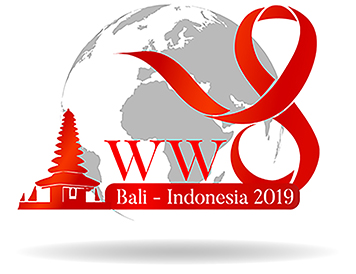Dwi Setianingtyas1, Nafiah1, Cane Lukisari1, Kharinna Widowati2, Nur Tsuraya2, Felicia Eda Haryanto3
Dental Departement of Dr. Ramelan Naval Hospital Surabaya and Departement of Oral Medicine, Faculty of Dentistry Hang Tuah University Surabaya, Indonesia.
Departement of Oral Medicine, Faculty of Dentistry Hang Tuah University Surabaya, Indonesia.
Dental Clinical Student, Faculty of Dentistry Hang Tuah University Surabaya, Indonesia.
Abstract
Background: Specific viral immunopathogenesis involves a series of processes, virus internalisation in the host, replications, spread of viruses, and damage of target cells. The CD4+ T lymphocytes are the major target of HIV infection. From tie time to time, their number may decrease. These T lymphocyte dysfunctions are fatal. The clinical manifestations of late stage HIV/AIDS were found in patients who were most often bed- bound because of various co-infections and opportunistic infections that attack the vital organs, including the lungs and oral cavity. Because of this debilitation, palliative care needs to be provided holistically and involving an integrated multidisciplinary approach.
Objective: To report a case with co-infections case in the oral cavity and lung as last stage HIV clinical manifestation when the CD4+ count was only 7 cells/mm3.
Case: A 35-year-old man with HIV was admitted to hospital on referral from a pulmonary specialist. The patient complained of many wounds in his mouth. Extraoral findings on the lips noted blackened hemorrhagic crusting. On his hands there were white patches, as well as on his face. Intraoral findings on the dorsum of the tongue dorsum noted thick white patches, and half of it covered by white layer that bled easily. There was an ulcer on the labial mucosa, multiple, and areas of tissue erosion on the hard palate.
Management: Palliative care was provided that involved: cleaning of the wounds, debridement, the application of aloe vera extract, maintenance of oral hygiene and the cleanliness of the surrounding skin of the head, and also macronutrient and micronutrient support. On the tenth day of treatment, there was improvement in the condition of his oral cavity.
Conclusion: Successful oral lesion therapy on late stage HIV/AIDS patient benefits from an integrated multidisciplinary approach, involving oral medicine, pulmonary care nutritionists, pharmacologists and other members of the healthcare team in order to achieved the best results.
Key words: HIV, AIDS, palliative, co-infections, CD4+


